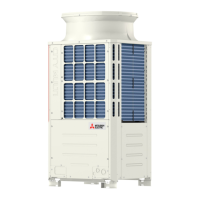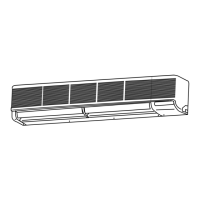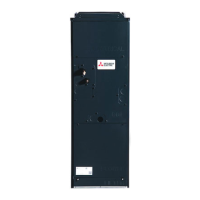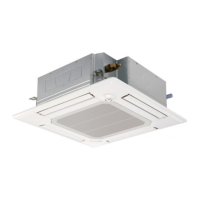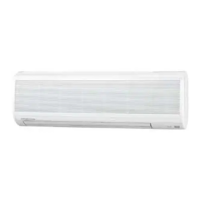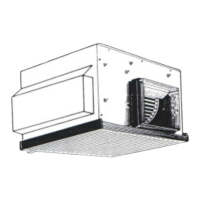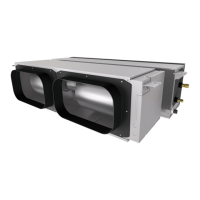–40–
55
55
5 CONTROL
[1] Control of Outdoor Unit
(1) Initial processing
• When turning on power source, initial processing of microcomputer is given top priority.
• During initial processing, control processing corresponding to operation signal is suspended. The control processing
is resumed after initial processing is completed. (Initial processing: Data processing in microcomputer and initial
setting of each LEV opening, requiring approx. 3 minutes at the maximum.)
(2) Control at start-up
• For 3 minutes after starting, the upper limit of frequency is 60Hz (when only No. 1 compressor is operating).
• The upper limit is 75Hz for 2 hours after the power has been turned on and for 30 minutes after the compressor
has started operation.
• Normal control is performed after the initial start mode (described later) has been completed.
(3) Compressor capacity control
• Variable capacitor compressor is performed by the variable capacity compressor (No. 1: inverter motor) and
constant capacity compressor (No. 2: It has capacity control switching).
• In response to the required performance, the number of compressors operating, the switching of capacity control
and the frequency of the variable capacitor compressor are controlled so that the evaporation temperature is
between – 2 and – 6°C in cooling mode and that the condensation temperature is at 49°C in heating mode.
• The fluctuation of the frequency of the variable capacitor compressor is as follows. This function is performed at
2Hz per second.
20 to 100 Hz (TH6 > 20°C and in cooling mode, or in heating mode)
30 to 100 Hz (TH6 < 20°C and in cooling mode)
1) No. 2 compressor operation, stopping and full-load/un-load switching
1 Switching from stopping to operation of No. 2 compressor.
When an adequate performance level cannot be achieved with an operation of only No. 1 compressor, No. 2
compressor will start an un-load operation.
• After No. 1 compressor has reached 100 Hz, No. 2 compressor stops → un-load or un-load → full-load.
2 Switching from operation to stopping of No. 2 compressor.
When the desired performance level is exceeded with the operation of the two compressors No. 1 and No. 2,
No. 2 compressor stops or performs an un-load operation.
3 Switching from un-load to full-load of No. 2 compressor.
When the desired performance level cannot be achieved with the operation of No. 1 compressor and No. 2
compressor in un-load, No. 2 compressor will switch to full-load operation.
4 Switching from full-load to un-load of No. 2 compressor.
When the desired performance level has been exceeded with the operation of the two compressors No. 1 and
No. 2 in full-load, No. 2 compressor switches to un-load operation.
2) Pressure control
The upper limit for the high pressure (Pd) has been set for each frequency. When this value is exceeded, the frequency
is reduced every 30 seconds.

